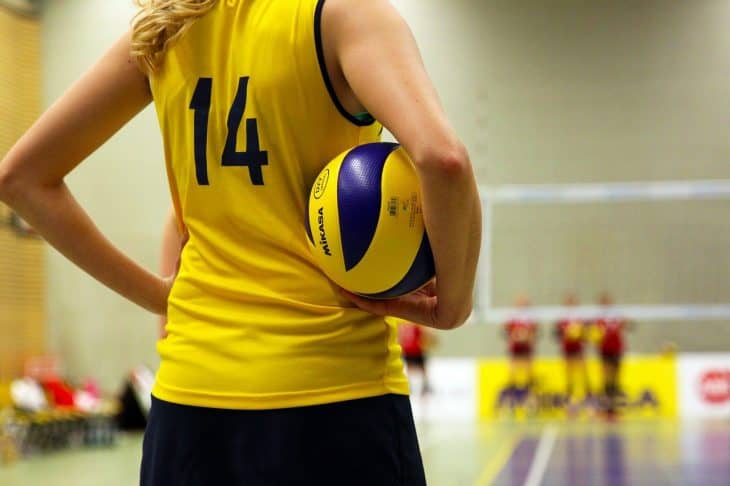
You might have found yourself at a volleyball match once or have watched a sports anime and did not understand a thing. At games, players, referees, and coaches will usually throw around words like ace, dig, and four-two. For those unfamiliar with the sport, some terms can get a little confusing.
From slang to scoring, this list of volleyball terms and definitions will guide you on your sports journey. Keep on reading for a game start!
What is volleyball?
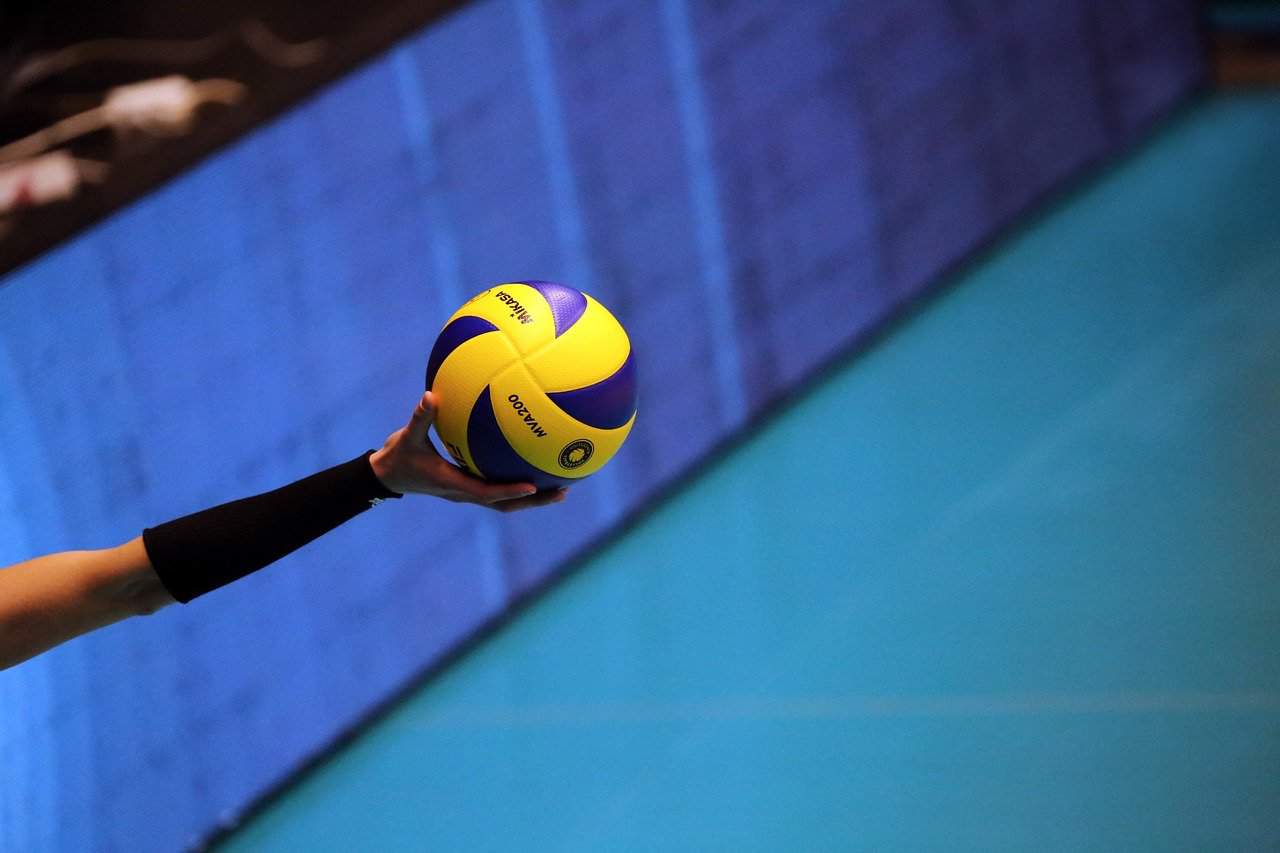
The first term we need to define is volleyball itself. Volleyball is a ball sport where two teams go against each other. A game usually occurs on a volleyball court, where a net stands in the middle.
The objective of the game is for players to hit the ball across the net toward the opposing team. A team scores if the ball falls to the ground. While trying to score, players must also defend their own side of the court from similar attacks. This makes volleyball a highly strategic game. It is both offensive and defensive.
Volleyball was first played in Massachusetts in 1895. YMCA physical education director William G. Morgan took inspiration from badminton, baseball, and tennis. He combined the nature of these games and created “Mintonette.”
In 1896, people started calling the game “volleyball” from the phrase “volley ball.” It grew popular, with the sports company Spalding publishing rulebooks and manuals in the early 1900s.
By 1964, volleyball was officially part of the Summer Olympic Games. Over the years, variations of the game came about, such as beach volleyball and sitting volleyball. Today, it continues to be a sport that many love to play and watch.
What are the players in a volleyball team called?
The players in volleyball also have unique names, which are some of the first volleyball terms that players and fans learn about.
In a volleyball team, there are seven positions. These are the setter, outside hitter, opposite hitter, middle blocker, libero, defensive specialist, and serving specialist. They rotate around the court, so they stand in different places during the game.
Some roles of these positions overlap with one another. However, some also have unique roles that only they are solely responsible for.
Outside Hitter
The outside hitter takes care of the left side of the court by hitting and blocking any attacks that come their way. When rotation occurs, they also pass and defend from the back row. This means that the outside hitter needs to be skilled in hitting, passing, and blocking.
Other names for the outside hitter include “OH,” “outside,” “pin,” and “left side.”
Opposite Hitter
In contrast to the outside hitter, the opposite hitter hits from behind the setter. They are also in charge of hitting, passing, and blocking. However, they stand opposite the outside hitter to cover more ground.
This is why the opposite hitter is also called right side. Other names for the opposite hitter include “OPP” and “pin.”
Setter
Once a ball enters your team’s side of the court, your team only has three chances to touch the ball. First, a player receives the ball. Then, the setter takes the second ball and passes it to one of the hitters for the third touch and attack.
The setter makes the decision for the team when it comes to attacking. This is why people refer to the setter as the quarterback in volleyball. The setter is also responsible for defending. When they are in the front row, they are in charge of blocking the opponent’s outside hitter.
People also refer to the setter as “S.”
Middle Blocker
When the setter passes the ball to the middle of the court, the middle blocker makes the final attack. Aside from being the team’s best blockers, the middle blocker is in charge of hitting fast-tempo sets.
Fast-tempo sets refer to quick attacks where the setter sets the ball in a low arch for the middle blocker to quickly hit or spike. These sets are difficult to make, so middle blockers don’t attack as often as outside hitters.
Other names for the middle blocker include “middle hitter,” “middle,” and “MB.”
Libero
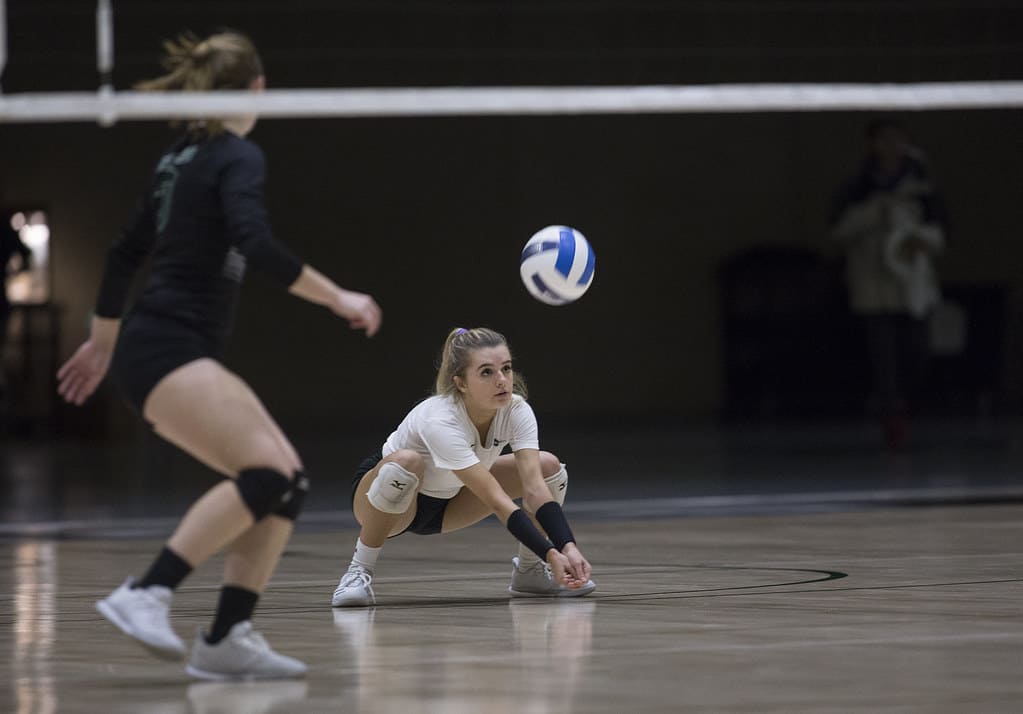
At a volleyball game, you might notice one of the players wearing a different jersey from the rest of the team. The libero wears a jersey of a different color to help everyone, especially officials, distinguish them from other players.
For most of the game, the libero stays in the back row. When the libero replaces another player on the court, it doesn’t count as an official substitution. This means that the coach and team can freely swap the libero in and out of the team throughout the game.
Unlike the rest of the team, the libero cannot attack. Their role is purely defensive, and they are usually the ones receiving hard serves from the opponent.
Defensive Specialist
As the name suggests, the defensive specialist is responsible for defense. They stand in the back row and receive the opponent’s serves. Their role is very similar to the libero.
However, defensive specialists do not wear a different colored jersey. They must also adhere to substitution rules, so they cannot replace a player in the game freely. In a game of six rotations, defensive specialists are usually only in for three turns.
People also refer to the defensive specialist as simply “DS.”
Serving Specialist
The serving specialist, or simply “SS,” is a player with a very specific role. They enter the court just to serve. A service will often set the tone for the rally, so the role of a serving specialist cannot be overlooked.
As the serving specialist, their goal is to serve a ball that is difficult for the other team to receive. That way, they can immediately score or throw off their opponent’s rhythm.
What are the other volleyball terms?
Of course, learning the volleyball terms for the players is only the start. At a volleyball game, you’ll likely hear other terms being used as well. Volleyball scoring, slang, and other tactics all have their own unique terms. You don’t have to worry because this list compiles these volleyball terms and their definitions!
Ace
One of the most common volleyball terms you’ll hear is “ace.” Ace refers to a serve that the opposing team was unable to receive or pass.
In other words, a serve is called an ace when the player, usually the serving specialist, scores a point with their serve.
Antenna
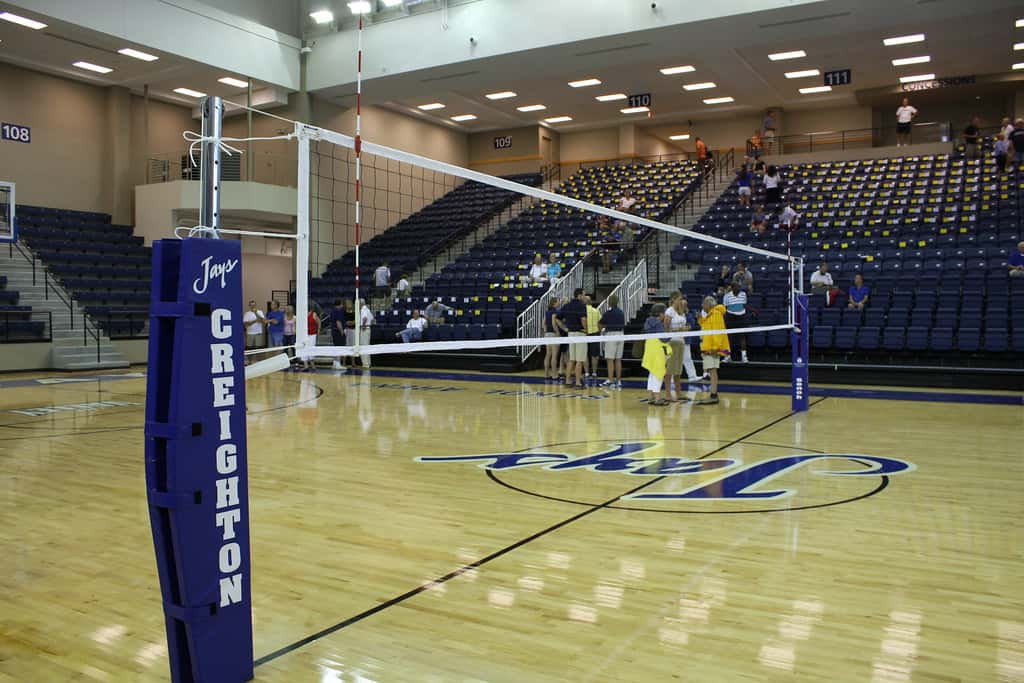
A net stands in the middle of the volleyball court. It separates the court into two sides, one for each team. If you look closely, you’ll notice two vertical rods near the edges of the net. These are antennas. Usually, these antennas are white and red, and they are only used for indoor nets.
Approach
When it comes to gameplay and tactics, one of the common volleyball terms you’ll hear is “approach.” Approach refers to the fast movement of a spiker when he or she sprints toward the net before jumping in the air for their spike.
Assist
For some volleyball terms, they retain their literal meanings. For assist, the meaning is a bit different. In general, the word “assist” refers to helping somebody with a certain task.
In volleyball, however, assist refers to the action of passing or setting the ball for your teammate to attack. This is usually the setter’s job.
Attack
“Attack” is one of the volleyball terms that is very easy to understand. In any competitive sport, players attack in order to score points. This is obviously the same case for volleyball.
When a player spikes or hits the ball over the net, this action is an attack. Often, the outside and opposite hitters perform this offensive strike.
Attack Error
One of the volleyball terms that teams like to avoid committing is an attack error. When an attack is unsuccessful, this results in an attack error. One common example of an attack error is when the ball lands out of bounds. When this happens, the opposing team who was meant to receive earns the point.
Another example of an attack error is when the ball goes into the net.
Attacker
Some volleyball terms overlap with one another. One example is the term “attacker.” Attacker refers to the hitter or spiker who performs the attack. The attacker does not refer to a specific position in the team as there is more than one player who can become the attacker throughout the game.
Attack Line
There are also specific volleyball terms for the markings on the volleyball court. One example is the attack line. The attack line refers to the line 3 meters away from the net. This line separates the front row players from the back row players.
Another name for the attack line is “10-foot line.”
Backcourt
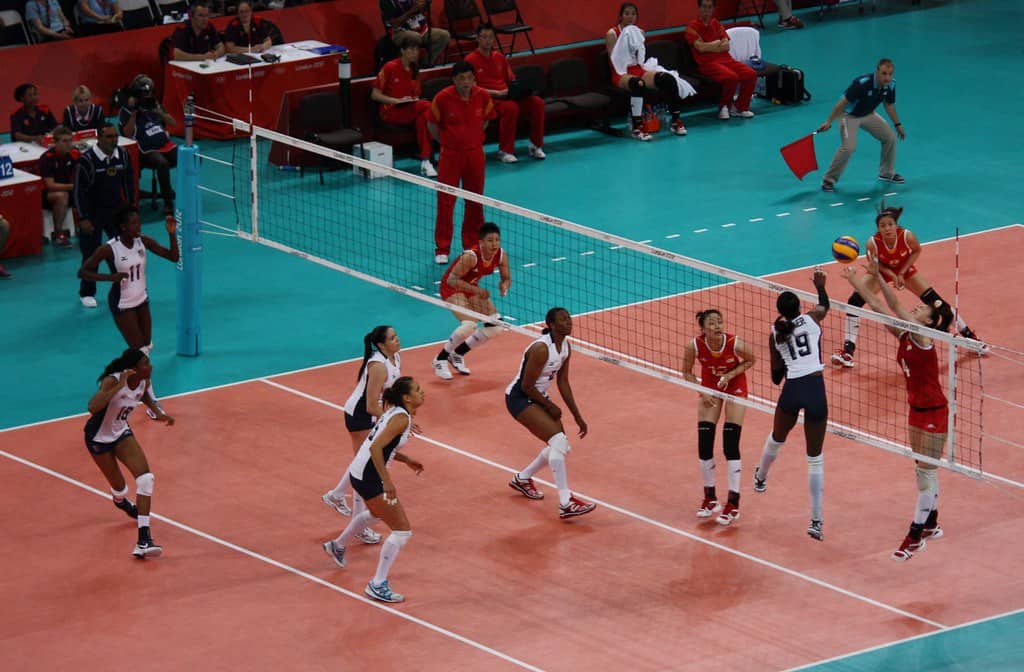
The area in between the attack line and the outer border of the volleyball court is the backcourt. This is where players in the back row stand. One person who always stays in the backcourt is the libero.
Back Set
If you’re looking for more volleyball terms that relate to gameplay, then how about the “back set”? Usually, a setter will toss the ball to their left or right. If a setter tossed the ball behind them for an attacker to hit, then the setter performed a back set.
A setter usually does a back set in order to surprise their opponents. Because the opposing team’s middle blockers weren’t expecting a back set, they might not block it in time.
Back Row Attack
One of the easiest volleyball terms to understand is the “back row attack.” Players in the back row can still attack despite being far away from the net. To do so, they need to jump from behind the attack line before hitting the ball. Successfully hitting the ball results in a back row attack.
Back row attacks can be quite tricky as players need to be aware of their surroundings. Accidentally stepping on or landing outside the attack line before they hit the ball results in an attack error.
Beach Dig
When beach volleyball became popular, new volleyball terms emerged. One example is “beach dig.” When a player receives a ball using both of their open hands and lifts the ball, it’s called a beach dig.
This receive usually occurs when the opponent attacks with a hard ball, and the receiver sets the ball for their own team’s counterattack.
Another name for the beach dig is “deep dish.”
Block
“Block” is one of the volleyball terms you’ll hear the most. One way to deflect a spike attack from the opposing team is to use a block. When a player jumps in front of the net with their arms raised like a wall, they perform a block. In other words, the player tries to block the attack after it crosses the net but before the ball can travel farther into the team’s side of the court.
This is one of the reasons why jump height is important in volleyball. The higher a player can jump, the higher their block can be.
Bump
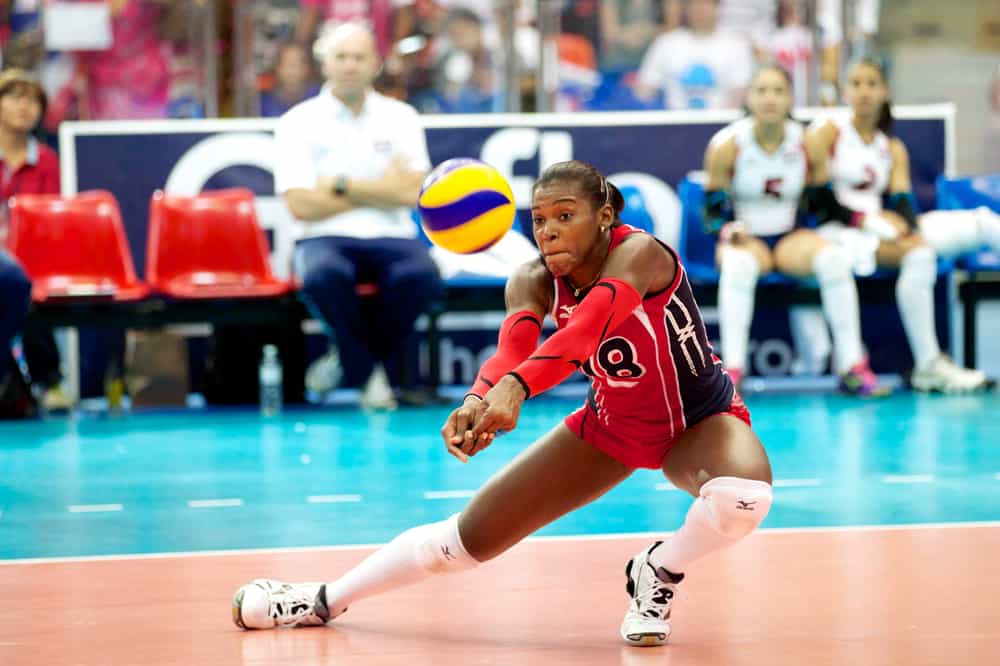
Volleyball terms like “forearm passing” might be difficult to remember. Luckily, another term for this technique exists. Bump is another name for forearm passing. Both refer to a type of pass where the player joins their arms together from the elbows to the wrists. Using their forearms, the player receives and passes the ball in an underhand motion.
Ball Handling Error
A ball handling error is an umbrella term for a few volleyball terms. For instance, a ball handling error can also refer to any of the blocking errors. Officials can also call for a ball handling error when a player hits the ball two consecutive times, which is against the rules.
Campfire
Did you know that there are also some creative and fun volleyball terms? One example is “campfire.” When a ball hits the floor and two or more players dive to save it, the players form an image of a campfire. Hence, the term campfire.
Center Line
The center line refers to the line that runs horizontally in the middle of the court. It is directly below the net and serves as another marker for dividing the court into two sides. Some might think it isn’t necessary to learn this term, but learning as many volleyball terms as possible never hurt anyone!
Closing the Block
In volleyball terms, closing the block refers to when other players join the blocker in front of the net. They “close the block” by standing on either side of the primary blocker. This widens the reach of their block as well as closes any gaps. With a closed block, the opponent’s attack can no longer go through.
Cross Court Shot
There is no shortage of volleyball terms for gameplay tactics and strategies. One example is the “cross court shot.” When a player hits the ball from one side of the court to the opposite side, the player performs a cross court shot. The ball travels across the court.
If it’s a bit hard to visualize, just imagine a ball traveling in a diagonal line from one side of the court to the other. That’s a cross court shot.
Cut Shot
Sports like billiards, cricket, and bowling all have their own version of a cut shot. In volleyball terms, however, a cut shot refers to when a player spikes the ball hard enough that it travels across the net.
It might sound similar to a regular spike, but a cut shot must be sharp and fast. A successful cut shot results in the ball landing 2 to 3 feet away from the net by the opposite sideline.
Decoy
A decoy refers to a person whose goal is to steal the opponent’s attention away from another person. There are plenty of other scenarios where people use decoys, such as video games and even police operations. In volleyball terms, the decoy is very much the same.
In an offensive attack, the decoy will pretend to receive the set. Usually, a team does this so that the opposing team’s blockers will chase after the wrong person and leave the real spiker free to score.
Deep Set
Aside from using a decoy, there are many other ways for a team to trick their opponents. For instance, a team can also perform a “deep set.” When a setter sets the ball away from the net to an awaiting hitter, they perform a deep set.
Setting the ball away from the net will unexpectedly throw off the blockers. This messes up their timing and will make it less likely for them to block the attack.
Dig
One of the volleyball terms you’ll hear often at games is “dig.” A dig refers to receiving or passing a fast-approaching ball. The slang term came about since most players have to dive close to the ground and “dig” to save the ball from touching the floor.
Dink
While some blocks are certainly difficult to pass through, it is not impossible. When a player successfully pushes the ball around or over the blockers, they perform a dink.
Dinks are not easy to perform. Some, especially beginners, might accidentally execute ball handling errors instead. Still, this is one of the volleyball terms that beginners should learn about right away.
Double Block
One of the easiest volleyball terms to understand is a “double block.” A double block is just like a regular block. However, instead of only one player, there are two players trying to deflect a spike from the opposing team.
Double Hit
Of course, there are also specific volleyball terms for fouls or illegal hits. One example is a “double hit.” A double hit occurs when the same player hits the ball consecutively.
According to volleyball rules, a player cannot hit the ball twice in a row. A player can hit a ball twice, but another player, usually the setter, must hit it in between. Otherwise, an official will issue a yellow card or warning.
Double Quick
A “double quick” is part of the volleyball terms for offensive attacks. When two hitters approach for quick sets, a double quick occurs. This play set requires two fast hitters coming from both sides. Given two choices, the setter can either set the ball for a front attack or a back attack.
Some also spell this as “double-quick.”
Doubles
Many volleyball terms overlap with other sports terms. For instance, a game of “doubles” in volleyball is the same as a game of doubles in badminton.
Doubles refer to a volleyball match with two players on each team.
Down Ball
One of the volleyball terms you’ll hear from the defense is “down ball.” When the defense calls a down ball, this means the players should not attempt to block the attack. They have to back off from the net and regroup because a block will not stop the ball.
A down ball usually results from an attacker hitting the ball overhand without jumping and off the net. When the attacker is unable to hit a powerful spike, the defense can also call for a down ball.
Dump
The word, “dump,” has a lot of definitions. In volleyball terms, however, a dump refers to a surprise attack by the setter. To catch the opponent off guard, the setter “dumps” the ball over the net instead of setting it for another player to hit.
Five-One
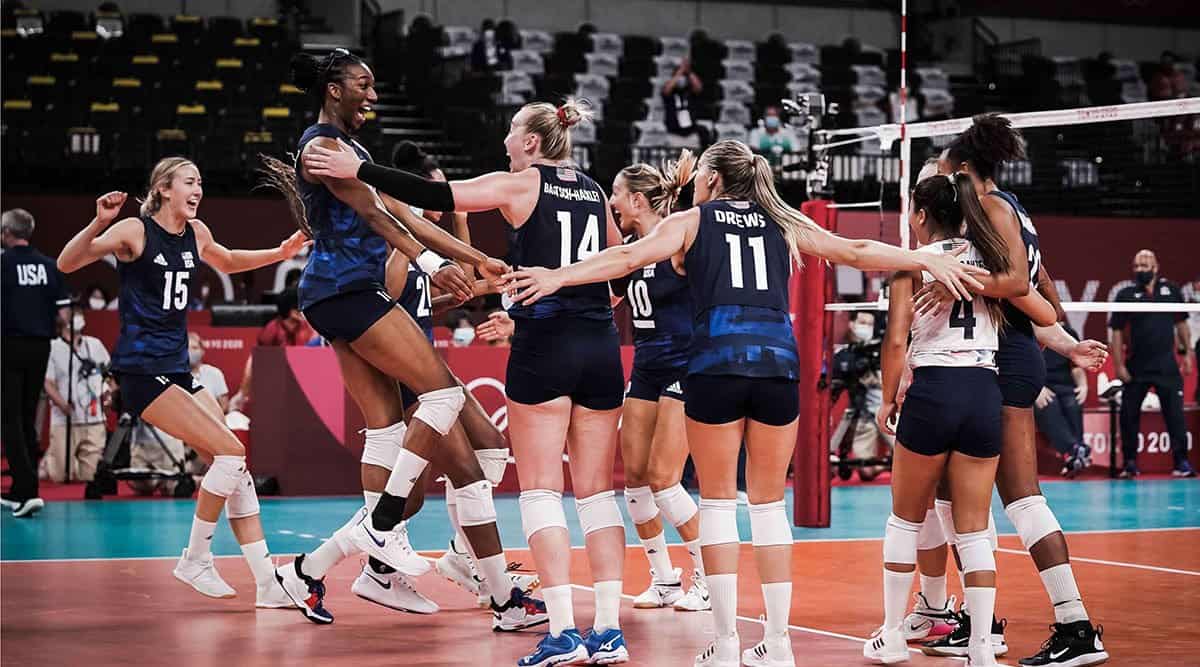
A five-one refers to an offensive strategy that uses all six members on the court. As a setter is about to pass the ball, all five hitters rush forward to hit the ball. Four of these hitters act as decoys. This tactic makes it difficult for the opponent’s blockers to predict which hitter they need to block.
Five Set
Some volleyball terms might sound similar, but they have different meanings. For instance, a “five set” is not the same as a five-one. A five set refers to a type of set where the setter performs a back set. The setter passes the ball in a high arc to the right front hitter.
Flare
In volleyball, a flare refers to a strategic move by the setter, hitter, and decoy. The setter sets the ball, and a decoy runs for the ball. However, the decoy only fakes a spike, and the actual hitter comes up from behind them to make the actual and final hit.
A flare will throw off the timing of blockers, which opens up the other side of the court for the hitter to attack.
Floater
Just like how there are specific volleyball terms for attacks, there are also unique names for types of serves. One example is a float serve or “floater.” When a server hits a successful floater, the ball does not spin.
This makes the ball’s path very unpredictable. It could travel left, right, or even suddenly fall to the ground. This makes it very difficult to receive.
Foul
Of course, a list of volleyball terms wouldn’t be complete without the word, “foul.” A foul refers to any action by the players that go against volleyball rules. There are a lot of ways to commit a foul. For example, shouting profanities directed at the other team or an official.
In any sport, it’s important to play by the rules so that the game is fair and square. Following the rules also helps keep everyone safe.
Four Set
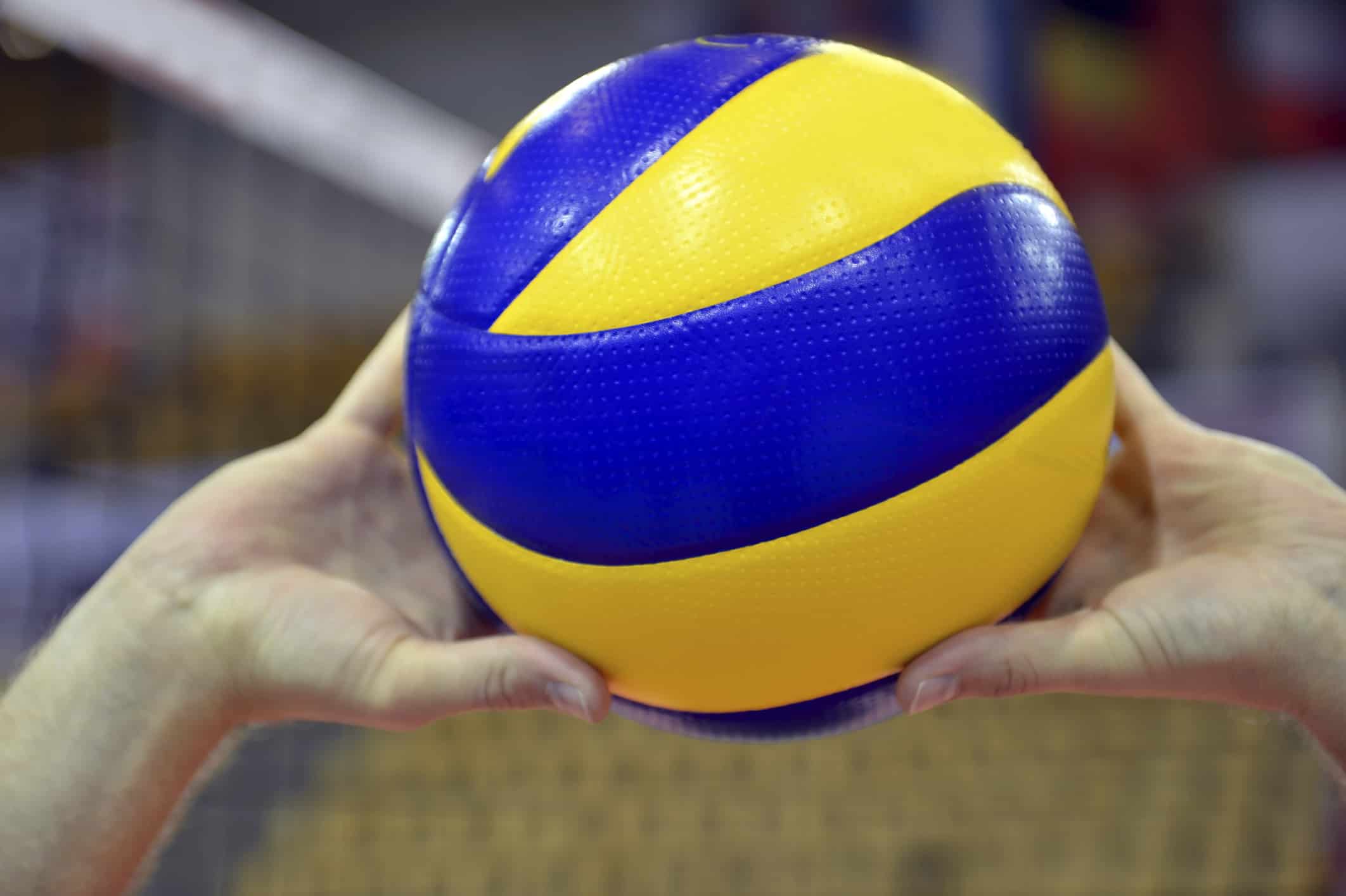
The volleyball terms for the different types of sets can get confusing. An easy way to understand a “four set” is to keep in mind the height of the ball. A setter properly executes a four set when they set a ball in an upward trajectory.
The ball goes up to 3 meters high and travels down to the left side of the net near the antenna. A skilled setter makes sure to aim the ball around a meter away from the net. That way, the hitter can have enough space to make their attack.
Four-Two
Another tactic that a team can use to attack is the “four-two.” The idea is similar to a five-one. However, in a four-two, there are four hitters and two setters. Three hitters and one setter all act as decoys. They pretend that they will be hitting the ball. This confuses the opponent, leaving the actual hitter and setter to attack.
Free Ball
Another example of volleyball terms you’ll hear players shout during a game is “free ball.” When a player calls a free ball, this means an “easy pass” from the other team. Usually, the opponent will spike the ball over the net to score a point. However, a free ball can also occur, where the opponent passes the ball instead of spiking it.
When the defense calls a free ball, then the players have to move into position to receive the ball instead of blocking.
Held Ball
When coaches teach newbies about volleyball terms, one of the first they teach is the “held ball.” A held ball refers to a ball that a player ends up holding instead of passing.
Volleyball rules state that a player cannot hold a ball. They must immediately pass the ball to another player. That is why a held ball is foul, a rule beginners must know by heart.
Isolation Play
In volleyball terms, isolation play refers to a diversion tactic by the attacker. The attacker distracts the other team’s blockers. If the attacker is successful, the actual hitter can then make a clean hit against a single block while the other blockers chase after the decoy attacker.
Jungle Ball
There are volleyball terms for so many facets of the game. In fact, there is also a name for a volleyball game played by people who don’t know how to play volleyball. This is called jungle ball. Another name for it is “picnic volleyball.”
Jungle ball is a casual game where people can have fun and not worry about any of the volleyball rules.
Jump Serve
A jump serve is one type of serve in volleyball. To perform a jump serve, the server tosses the ball into the air and jumps after it. While the server is midair, they hit the ball in a downward motion.
Joust
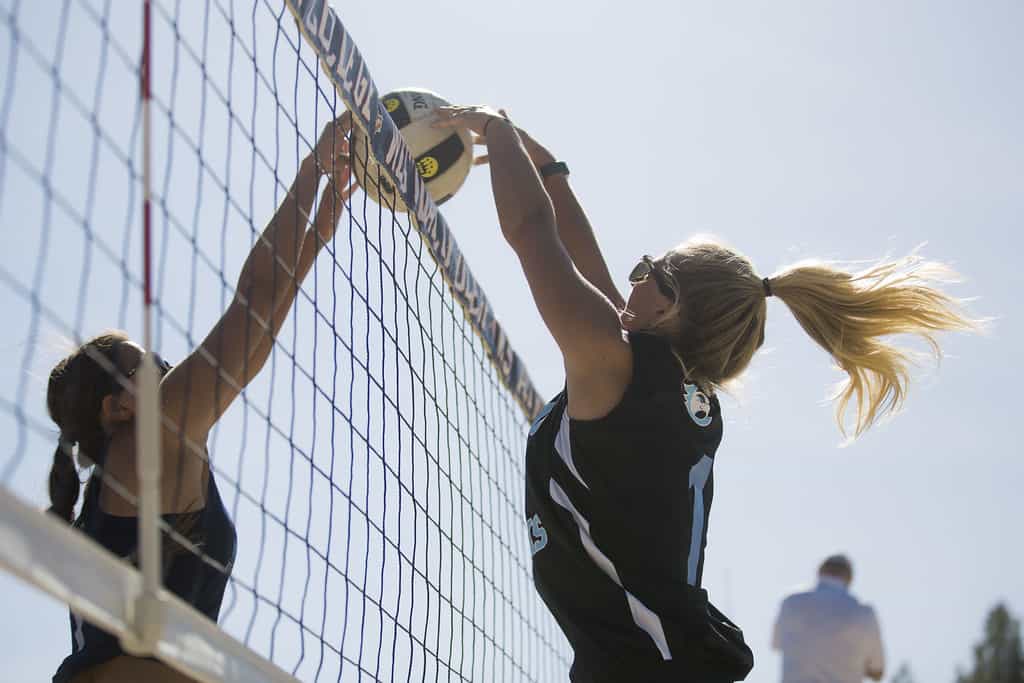
In the Middle Ages, jousting is a popular sport where two knights riding horseback would face each other with lances. In volleyball terms, a joust refers to two players, one from each opposing team, trying to play a ball above the net. This happens simultaneously, and each tries to score by overpowering the other player.
Kill
Many people ask, “what is a kill in volleyball?” In simple terms, a kill refers to a successful attack. When a hitter spikes a ball that results in an immediate point, the hitter achieves a kill.
Line
On a volleyball court, you’ll notice that there are markings on the floor. These markings are called lines. Their purpose is to divide the court into specific zones and areas. They survive as a guide for the players in the court.
Line Shot
One example of volleyball terms for types of attacks is the “line shot.” When a player successfully avoids a block and the spiked ball lands on the opponent’s sideline, the player executes a line shot. The ball lands too close to the corner of the court, where the opposing team cannot receive it.
Let Serve
Sometimes, serves won’t always travel smoothly. Sometimes, a “let serve” can happen. When the ball hits the net after a serve, a let serve occurs. If the ball rolls over to the opponent’s side of the net, then the play continues, and the opponent must receive it. If the ball falls to the server’s side of the net, then the ball is considered dead.
Middle Back
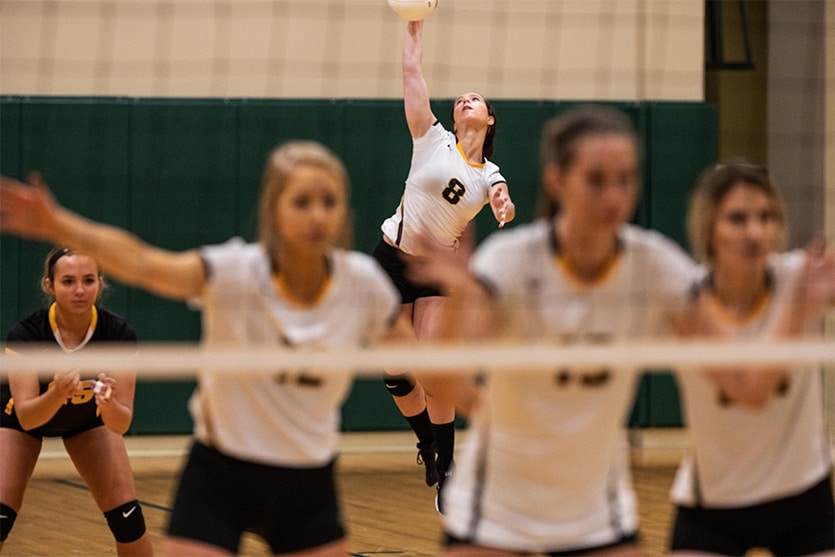
“Middle back” is one of the volleyball terms that might take some time getting used to. This term refers to a position in the back row. The middle back refers to the middle of the back row, where the defensive player usually stands.
Other names for the middle back are “position 6,” “P6,” “zone 6,” and “Z1.” Some also spell it as “middle-back”.
Middle Up
A middle up refers to a defensive strategy where a player plays defense by the 10-foot line. In simpler volleyball terms, the player, usually the setter, stands in the middle back to cover any short shots or dumps from the opposing team.
Multiple Offense
When a team uses different types of sets in a game, this system of play is called multiple offense. Teams who can pull off a multiple offense are usually those who are experienced, as multiple offense requires a lot of skill and teamwork. Of course, the key person in executing a multiple offense system is the setter. A setter must know how to do different types of sets.
Offside Blocker
Since there are different types of blockers on the court, there are also specific volleyball terms for them. The offside blocker refers to the blocker standing by the net, away from where the opponent is attacking.
In other words, the offside blocker is “off to one side.” From their position, the offside blocker has to pull back from the net to help block the attack. The offside blocker must be quick on their feet.
Off-speed Hit
Some hitters won’t use their full force when hitting spikes. When an attacker makes a low-impact hit on a ball and the ball spins, then the attacker executes an off-speed hit.
Other volleyball terms for off-speed hit include “off-speed spike” or “off-speed shot.”
Overhand Pass
An overhand pass refers to a type of pass where the player uses both of their hands to pass the ball. Their hands are open above their forehead, and they use their fingers and thumbs to control the ball. This is one of the most common passes for setters.
Overhand Serve
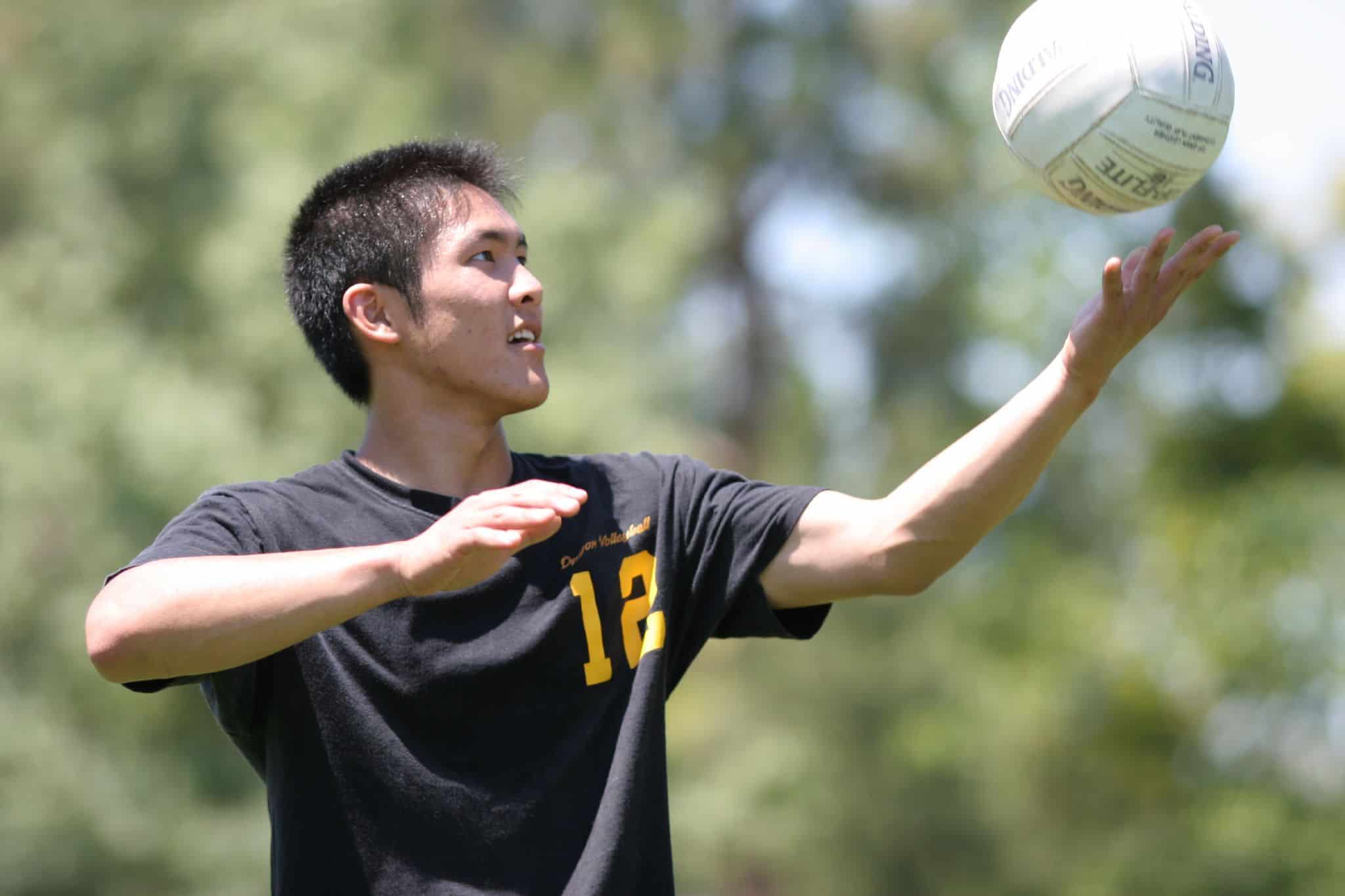
As the name suggests, an overhand serve refers to a type of serve where the player strikes the ball with their hand above their shoulder. The server tosses the ball in the air and swings their hand from above their shoulder to make an overhand serve.
Overlap
The general definition of “overlap” is to extend over or for two layers or objects to overlap. In volleyball terms, an overlap refers to a rotation error. When players are “overlapping,” it means they are out of position. This foul results in a point for the other team. If your team was also meant to serve the ball, the team loses this chance as the official passes the chance to serve to the other team.
Paint Brush
In art class, a paintbrush refers to a tool for applying paint. The artist uses a paintbrush to apply strokes of paint on their canvas. In volleyball, a paint brush refers to a failed spike. The hitter tries to spike, but their fingers only manage to brush the ball.
Pancake
Plenty of volleyball slang terms come from everyday objects and even food. One example is the term “pancake.” When a player dives in to save a ball from hitting the floor by using the back of their hand, this is called a pancake. The ball bounces off the back of the player’s hand.
Penetration
When a blocker accidentally reaches too far and breaks the plane of the net, they commit a foul. This foul is called penetration.
Power Tip
A power tip refers to an attacker’s powerful push of the ball. To execute a power tip, the attacker must use great force to direct the ball toward the other side of the court.
Quick Set
If you’ve watched the famous sports anime, Haikyuu!!, then you probably already know what a “quick set” is. If you haven’t, then this list of volleyball terms is here to guide you.
A quick set refers to a set where the hitter approaches the ball before the setter even passes the ball. Usually, the setter passes the ball 2 feet above the net, and the hitter jumps before the setter touches the ball. This is not an easy set to deliver as it requires precise timing between the setter and hitter.
Ready Position
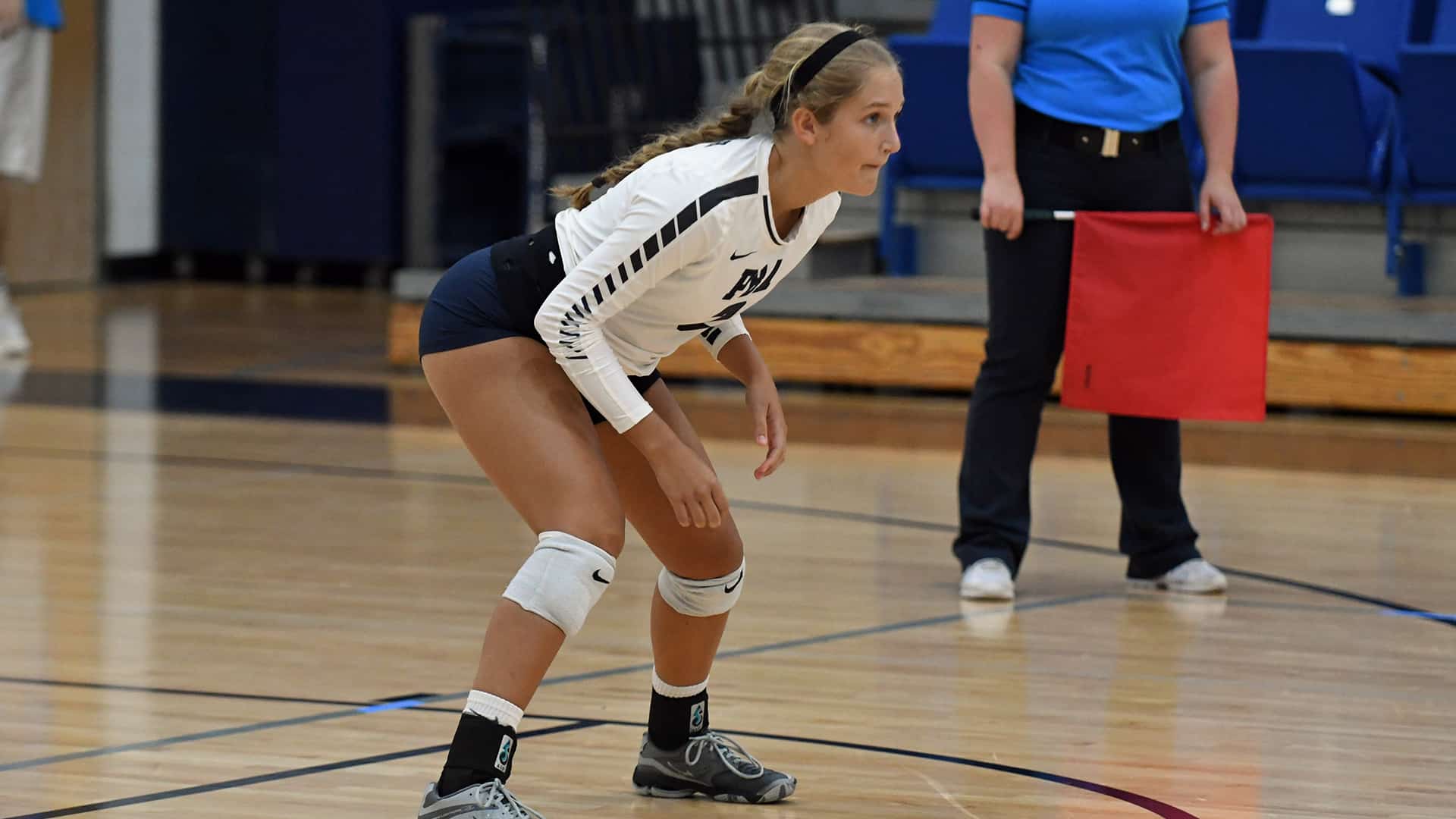
There are also volleyball terms for a player’s stance in a game. The ready position refers to the stance a player takes right before they move to receive or attack. When players are standing neutral yet alert, they are in their ready position.
Reception Error
A reception error occurs when the defending team fails to return a serve. This mistake is considered an error because it was possible to receive the serve. The reception error leads to an ace, where the attacking team scores with their serve.
Red Card
In many sports games, referees will pull out a red card to show a foul or penalty. Volleyball is no exception. When a volleyball official displays a red card, this means they are calling for a severe penalty.
Some examples of penalties include losing a point, losing a serve, or disqualifying a player. An official can also call for a red card without prior warning. This is one of the volleyball terms you’ll want to know and avoid.
Roll
Some balls can seem impossible to save. However, defenders who can execute a roll can return a ball close to the floor. To save a ball close to falling, a player can dive to receive the ball and pass it over their shoulders or back.
Passing the ball over their shoulders results in an over the shoulder roll. Meanwhile, passing the ball over their back is called a barrel roll.
Roof
A roof is more than just the structure covering your house. In volleyball terms, a roof refers to a type of block that completely shuts down an attack. The player’s aggressive blocking by the net deflects the ball, causing it to hit the floor.
Rotation
A volleyball game operates around a series of rotations. When a side out occurs, the players rotate in a clockwise direction around the court. The rotations allow players to occupy other areas in the court. This also ensures that players take turns in serving the ball.
Serve

This is one of the most common volleyball terms ever. A serve refers to one of the six basic volleyball skills. To put the ball into play, the server makes a serve. This starts the rally. A serve is also the only skill where one player solely executes it.
Service Error
Of course, if there are reception errors, then there are also are service errors. A service error occurs after an unsuccessful serve. This can happen in different ways. One example is when the server makes a faulty serve where the ball doesn’t pass the net. Another common service error is when the ball lands outside the court’s lines or out of bounds.
Set
Another basic skill in volleyball is setting. A set refers to the second pass where the ball is “set” for the attacker. In other words, it is when the setter directs the ball toward the attacker. While the setter doesn’t always have to be the one setting the ball, it is their primary responsibility.
Side Out
A side out occurs when the serving team loses the rally. The opposing team, who had initially received and managed to end the rally by scoring, is then given the right to serve.
This is not to be confused with the system, side out scoring, where teams can only score when they are the one serving. This type of scoring often prolongs games, which is why most volleyball matches opt for rally scoring instead. In rally scoring, either team can score.
Six Pack
Just like any other sport, volleyball also comes with its fair share of accidents. One example is the “six pack.” A six pack occurs when a spiked ball hits the head or, worse, the face of the blocker.
This is one reason why having medical professionals present with first aid kits is necessary for volleyball matches.
Spike
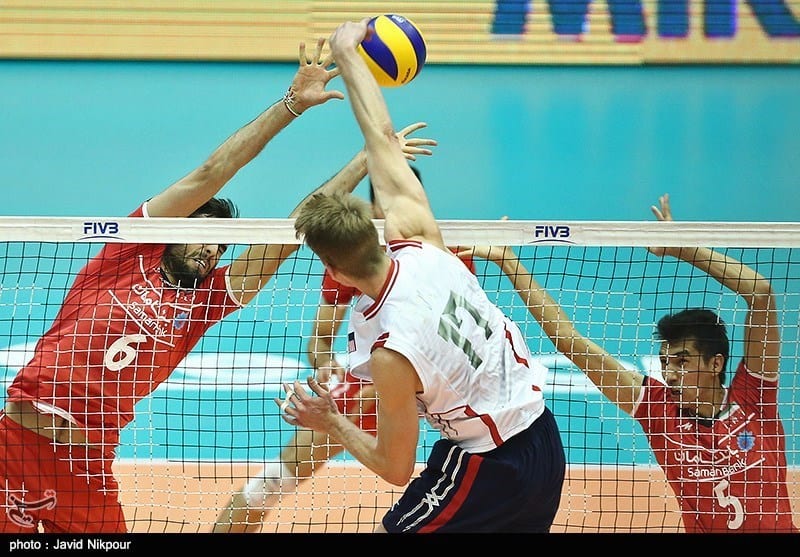
One of the simpler volleyball terms is the “spike.” A spike refers to the attack or hit a player makes in an attempt to score against the other team.
Strong Side
In volleyball, players have a “strong side.” A strong side refers to the position or stance that is most comfortable for them. For instance, a right-handed hitter’s strong side is from the left-front position. This is because they can use their right hand to hit the ball. Likewise, a left-handed player’s strong side would be at the right-front position.
Turning In
When a ball lands out of bounds after a blocker hits it, the score goes to the attacker’s side. To avoid this, blockers need to “turn in.” Turning in refers to an outside blocker “turning” their body toward the court. That way, the blocked ball lands in bounds.
Tuna
Another slang word from this list of volleyball terms is “tuna.” When a player accidentally gets caught in the net, they are called a tuna. It comes from the similar image of catching the said fish with a fishing net.
Some also simply call this “fish” instead of tuna.
Underhand Serve
Another type of serve is the underhand serve. When a player tosses the ball around waist high and strikes it with their fist in an underhand motion, then they are performing an underhand serve.
Weak Side
If a player has a strong side, then it only makes sense that they have a weak side. A player’s weak side is basically the opposite of their strong side. When a right-handed player finds themselves on the right side of the court, they are attacking from their weak side.
Another name for the weak side is “off-hand side.”
Wipe
To counterattack a blocker, a hitter can perform a wipe. A wipe is a strategic move where the hitter spikes the ball into the blocker’s hands, where it bounces off and lands out of bounds. Because the ball touches the blocker’s hands, the attacker’s team scores the point.
Another term for wipe is “swipe.”
Yellow Card

Last but not least on this list of volleyball terms is the yellow card. When the official displays a yellow card, it means they are issuing a warning to the team. No points or penalties are issued from a single yellow card. However, if a player receives two yellow cards, then it means he or she is disqualified from the game.
Was this page helpful?
Our commitment to delivering trustworthy and engaging content is at the heart of what we do. Each fact on our site is contributed by real users like you, bringing a wealth of diverse insights and information. To ensure the highest standards of accuracy and reliability, our dedicated editors meticulously review each submission. This process guarantees that the facts we share are not only fascinating but also credible. Trust in our commitment to quality and authenticity as you explore and learn with us.
